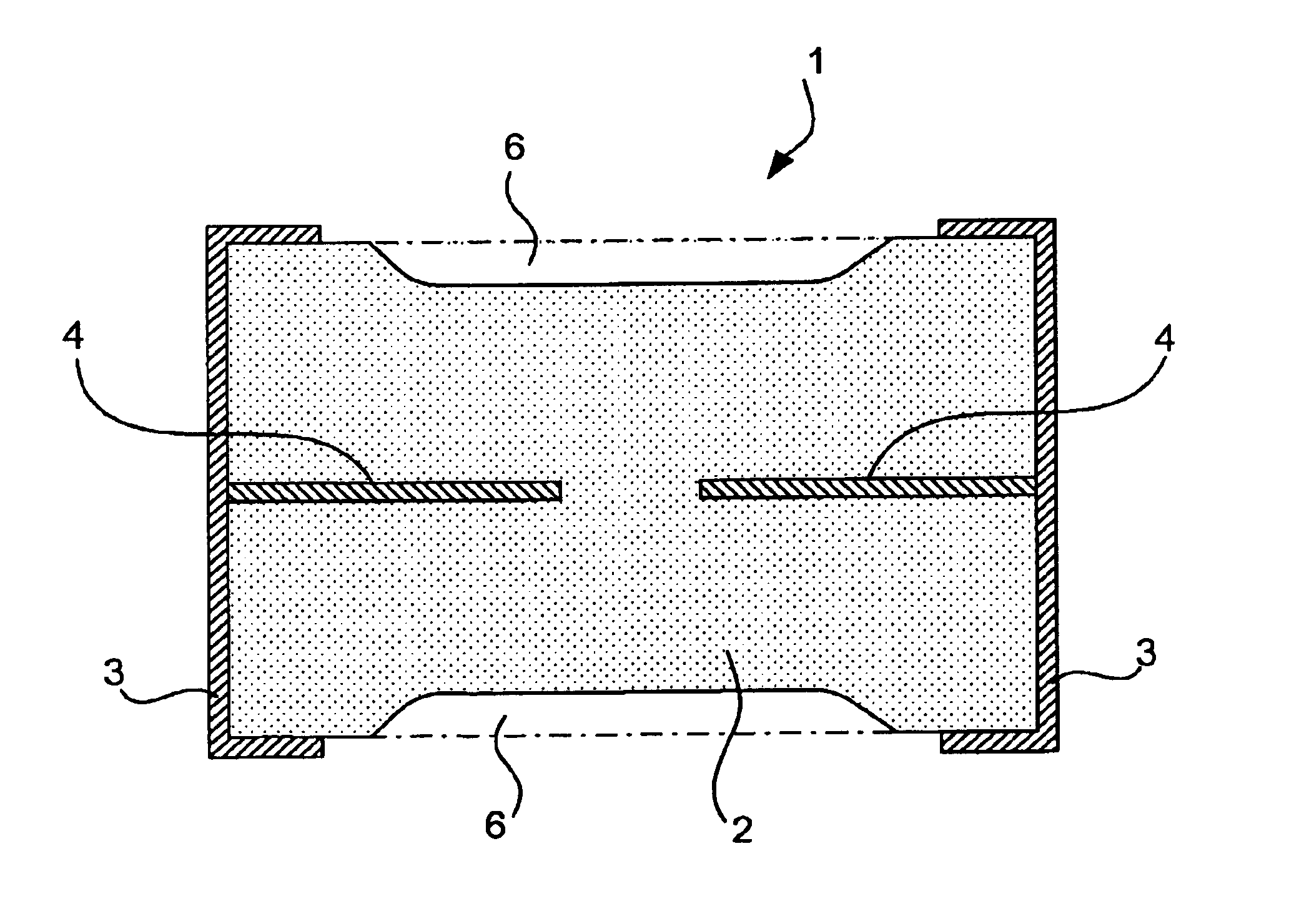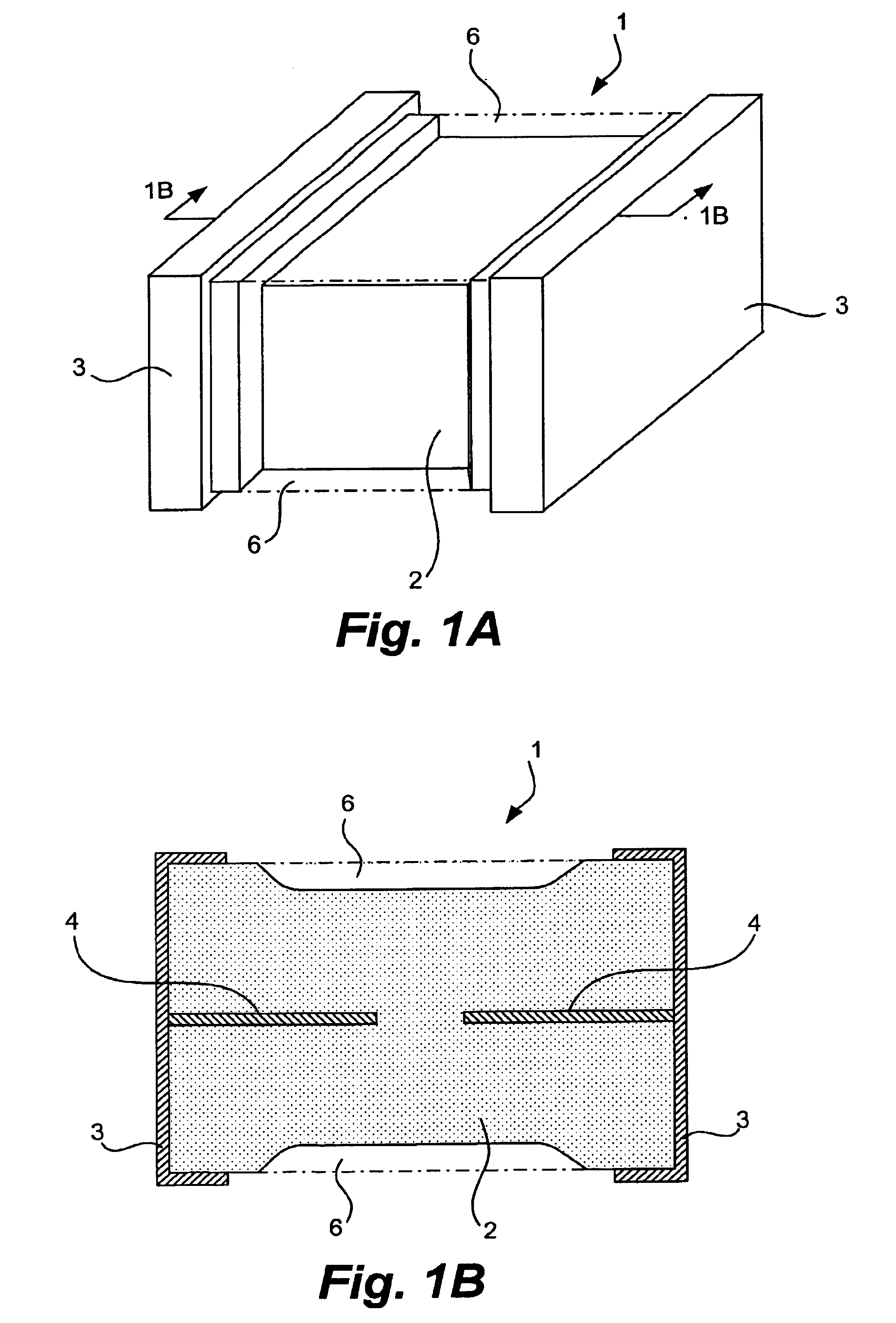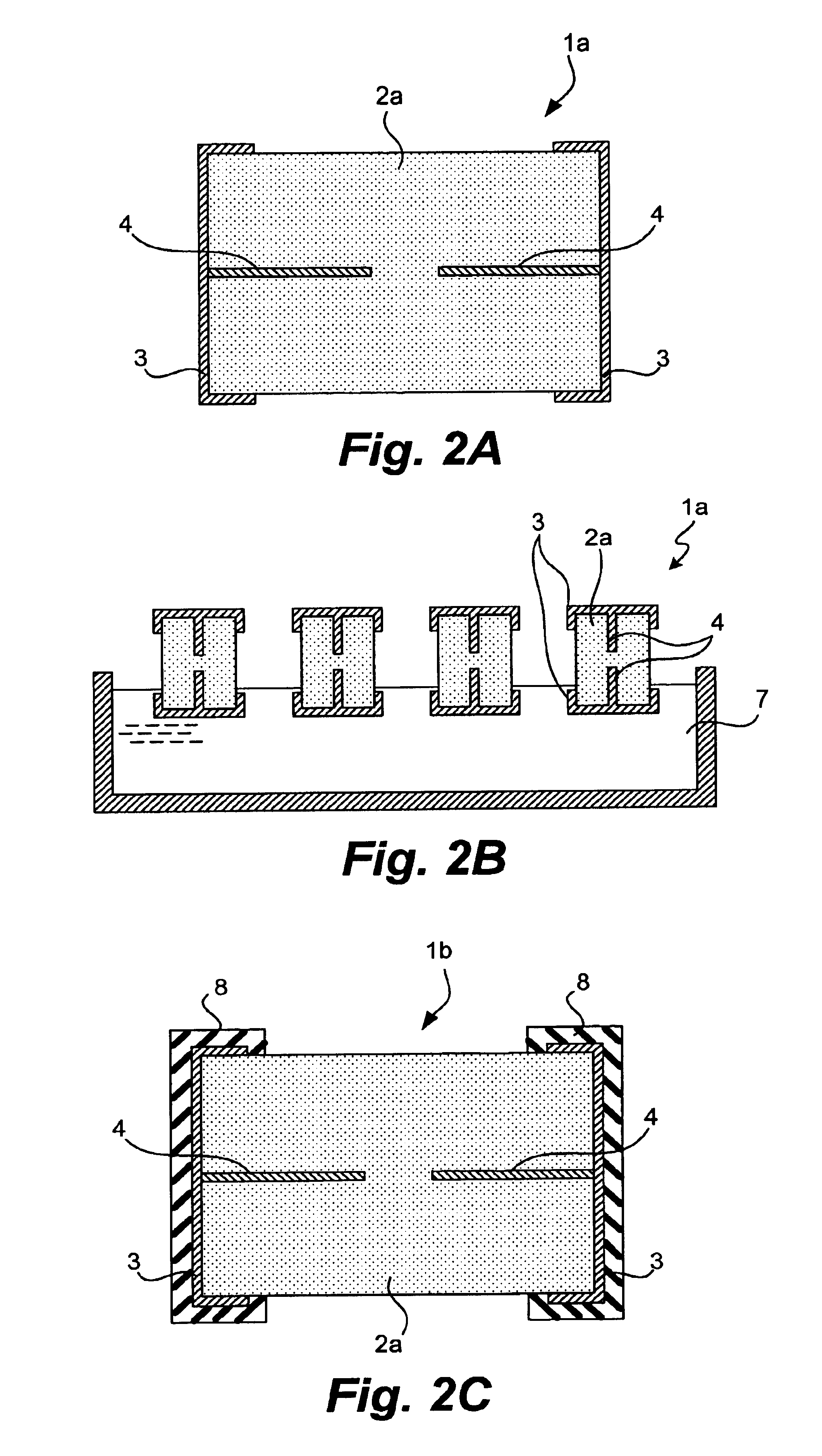Method of producing thermistor chips
- Summary
- Abstract
- Description
- Claims
- Application Information
AI Technical Summary
Benefits of technology
Problems solved by technology
Method used
Image
Examples
Embodiment Construction
[0019]The invention is described next by way of an example. FIGS. 1A and 1B show a thermistor chip 1 embodying this invention, comprising a thermistor body 2, outer electrodes 3 and inner electrodes 4 and being characterized wherein that the thermistor body 2 has portions which have been melted away and indented (referred to as the “melted portions 6”). The thermistor body 2 comprises a semiconducting ceramic material having oxides of a plurality of transition metals such as Mn, Ni, Co, Fe, Cu and Al. Portions of the thermistor body surface except where the outer electrodes 3 are formed on mutually opposite end parts of the thermistor body 2 are melted away by a solvent 10 (shown in FIG. 3A and to be explained below) to form the indented melted portions 6. The inner electrodes 4 are formed inside the thermistor body 2 such that their inner end parts are opposite to each other while the outer end part of each is electrically connected to a corresponding one of the outer electrodes 3....
PUM
| Property | Measurement | Unit |
|---|---|---|
| Length | aaaaa | aaaaa |
| Concentration | aaaaa | aaaaa |
| Electrical resistance | aaaaa | aaaaa |
Abstract
Description
Claims
Application Information
 Login to View More
Login to View More - R&D Engineer
- R&D Manager
- IP Professional
- Industry Leading Data Capabilities
- Powerful AI technology
- Patent DNA Extraction
Browse by: Latest US Patents, China's latest patents, Technical Efficacy Thesaurus, Application Domain, Technology Topic, Popular Technical Reports.
© 2024 PatSnap. All rights reserved.Legal|Privacy policy|Modern Slavery Act Transparency Statement|Sitemap|About US| Contact US: help@patsnap.com










